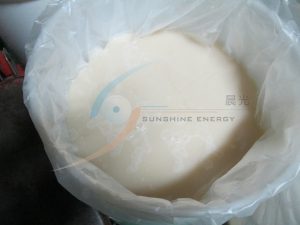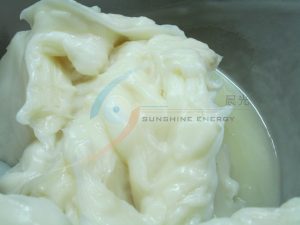Lard is known as pig fat obtained from various parts of the pig’s body by frying and skimming. It is still by far the mostly commonly used fat for baking purpose. When taken in moderation, lard can have a number of good nutritional points in their favor.
With regard to determining the quality of edible fats or oils, or more precisely speaking, the oxidation in edible fats and oils, two parameters need to be examined: AV and POV. The result could serve as an indicator of processing and storage conditions. Essentially the small is the acid level, the better is the quality.
In a house conducted experiment, Sunshine Energy tried to find out the variations of the two parameters after boiling the lard to 160 Celsius followed by rapid cooling. Observations are given as below:
- 4 minutes are required to lower the temperature to 100 Celsius, 27 minutes are required further down to 28 Celsius.
- Lard processed by rapid cooling appears denser in structure and brighter in color.


- Food aroma are kept to the greater extend as it evaporates less to the air during the process.
- The acid value is 80% lower than Taiwan food safety standard.
- The peroxide value is 8% lower than Taiwan food safety standard.
- Compared to ambient cooling, rapid cooling results in remarkably shorter cooling time, enhanced footage space usage and productivity.
Last but not the least chilled lard needs to be packed in a controlled environment to avoid the potential food cross contamination.